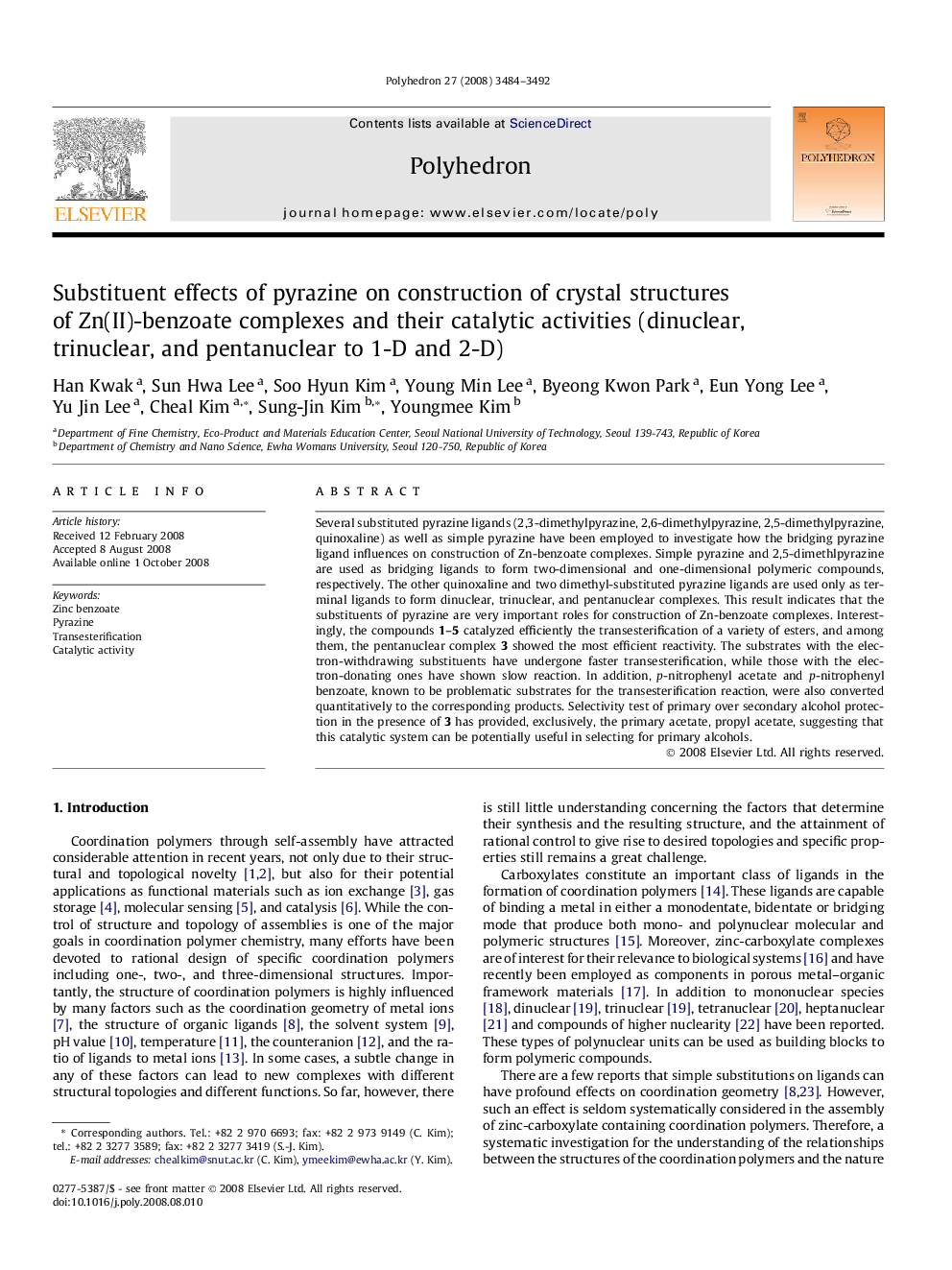| Article ID | Journal | Published Year | Pages | File Type |
|---|---|---|---|---|
| 1337747 | Polyhedron | 2008 | 9 Pages |
Several substituted pyrazine ligands (2,3-dimethylpyrazine, 2,6-dimethylpyrazine, 2,5-dimethylpyrazine, quinoxaline) as well as simple pyrazine have been employed to investigate how the bridging pyrazine ligand influences on construction of Zn-benzoate complexes. Simple pyrazine and 2,5-dimethlpyrazine are used as bridging ligands to form two-dimensional and one-dimensional polymeric compounds, respectively. The other quinoxaline and two dimethyl-substituted pyrazine ligands are used only as terminal ligands to form dinuclear, trinuclear, and pentanuclear complexes. This result indicates that the substituents of pyrazine are very important roles for construction of Zn-benzoate complexes. Interestingly, the compounds 1–5 catalyzed efficiently the transesterification of a variety of esters, and among them, the pentanuclear complex 3 showed the most efficient reactivity. The substrates with the electron-withdrawing substituents have undergone faster transesterification, while those with the electron-donating ones have shown slow reaction. In addition, p-nitrophenyl acetate and p-nitrophenyl benzoate, known to be problematic substrates for the transesterification reaction, were also converted quantitatively to the corresponding products. Selectivity test of primary over secondary alcohol protection in the presence of 3 has provided, exclusively, the primary acetate, propyl acetate, suggesting that this catalytic system can be potentially useful in selecting for primary alcohols.
Graphical abstractSeveral substituted pyrazine ligands as well as simple pyrazine have been employed to investigate how the bridging pyrazine ligand influences on construction of Zn-benzoate complexes. The structural differences between such complexes reveal that the change of the substituents of the ligands has a great influence on the complex structures. The compounds catalyzed efficiently the transesterification of a variety of esters.Figure optionsDownload full-size imageDownload as PowerPoint slide
